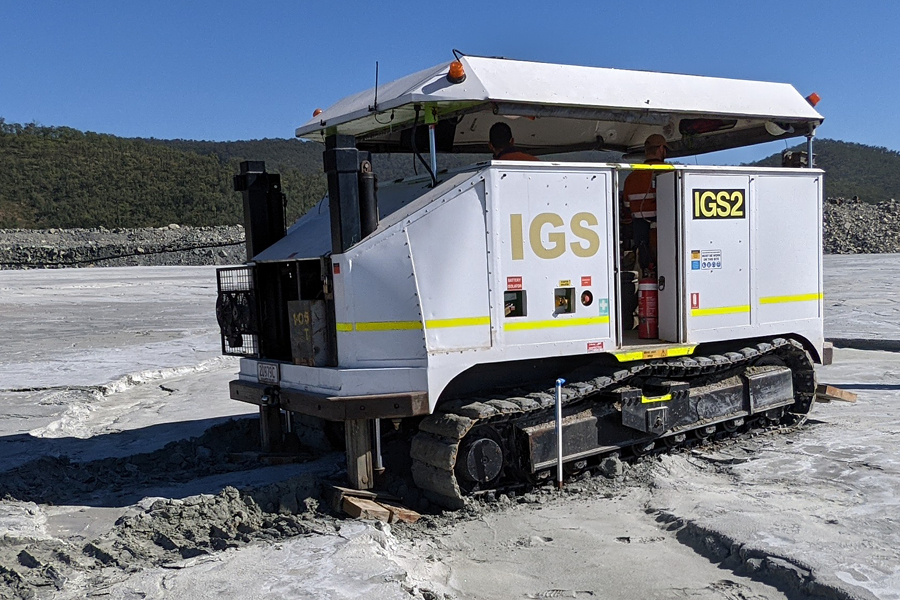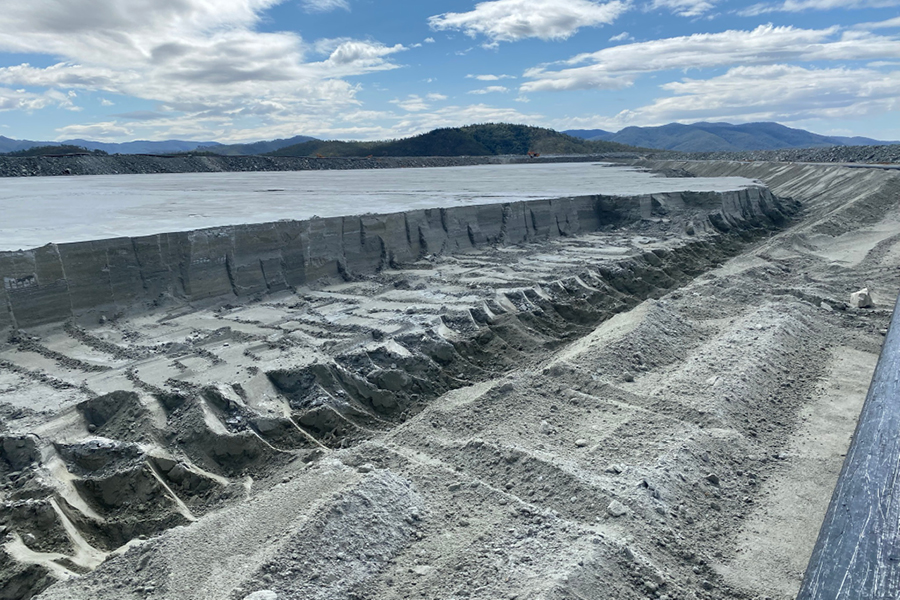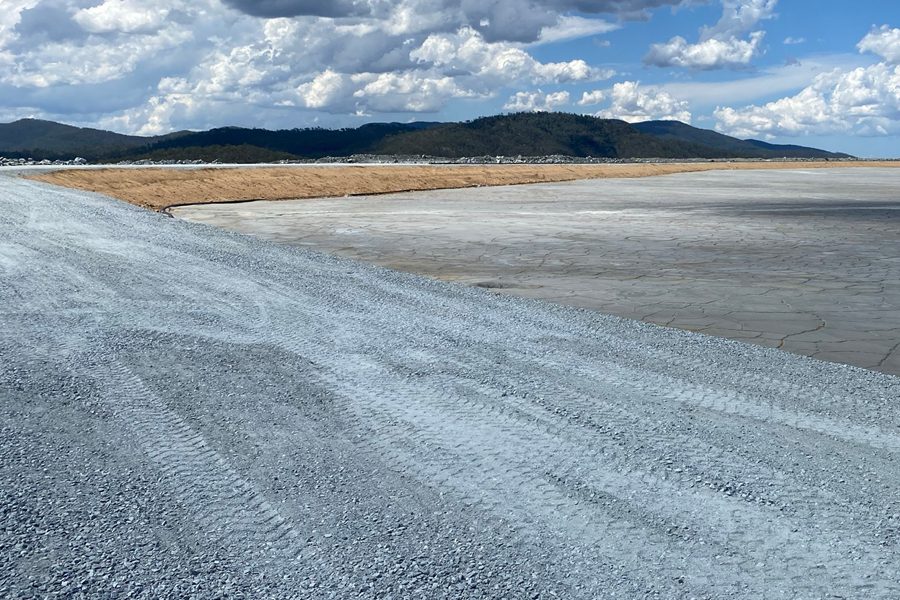
Site and Background
The Mount Rawdon Gold Mine is located approximately 14km southeast of the township of Mount Perry, southwest of Bundaberg. The Mt Rawdon Operations (MRO) Tailings Storage Facility (TSF) is situated some 1.3 km northwest of the Mt Rawdon orebody, adjacent to and directly northwest of the plant area. This storage is used primarily for tailings deposition, with minor inclusions of acid waste rock material.
The TSF comprises a valley-type storage, formed by three embankments:
A primary embankment at the northern end of the site (Northern Embankment). An embankment at the southern end that extends around the eastern perimeter (Southern Embankment). A saddle embankment formed on the western perimeter (Western Saddle Embankment).
Stormwater inflows are limited to the TSF surface area, plus a minor catchment to the west. Water accumulating in the TSF (either tailings supernatant or stormwater) is recovered from the storage for process makeup use.
The TSF development has been carried out over several construction campaigns, with AWA/ATC Williams being involved since the inception of the mine back in 2000.

Field Investigation
The latest geotechnical investigation undertaken at the MRO TSF was carried out between May to June 2021. The CPTu data was analysed to estimate the engineering parameters of in-situ tailings to support a Life of Mine (LoM) raise. Specific engineering variables were analysed and presented as profiles against depth using published correlations. In addition, to the engineering properties analysis, a liquefaction potential assessment was undertaken to determine the tailings profiles’ susceptibility to flow and cyclic liquefaction.
The field-testing program comprised of the following investigation methods:
- Cone Penetration Testing with pore pressure (CPTu) with Pore Pressure Dissipation Testing (PPDT);
- Seismic Dilatometer Marchetti Test (SDMT);
- Tube Sampling; and
- Installation of Vibrating Wire Piezometers (VWP’s).
The outcome of the investigation was successfully able to:
- Investigate the tailings profile to depths of ~60m including pore pressure dissipation analysis;
- Characterise and understand the strength of the tailings material;
- Understand the potential for flow and cyclic liquefaction from SDMT testing and empirical correlations;
- Monitor and analyse pore pressure and pressure head within the tailings profile upon successful remote operation; and
- Obtain representative samples for laboratory analysis.
ATC Williams Laboratory Involvement
Representative samples were collected during the investigation and tested in-house at ATC Williams Melbourne based NATA accredited laboratory.
Testing was conducted to determine the material parameters and Critical State Line (CSL), helping to determine the materials susceptibility to liquefaction. The laboratory testing program included the following:
- Minimum/Maximum Dry Density;
- Field Density;
- Monotonic Triaxial Test (CIU and CU);
- Soil Particle Density;
- Moisture Content;
- Atterberg Limits; and
- Particle Size Distribution (PSD).
A primary focus was on deriving the CSL; since the CSL changes with particle size distribution (PSD), samples were tested with varying Soil Behaviour Type’s (Ic). As part of the testing program, six isotropically consolidated drained/undrained and two anisotropically consolidated undrained monotonic triaxial tests were performed on the tailings for determination of the two CSLs.
The laboratory testing program was successfully able to identify the CSL of the tailings material from the samples retrieved on site. Classifying the material as primarily having contractive behaviour.

Construction Support and Supervision (QC related)
ATC Williams undertook periodic site visits during the construction of the raise on behalf of the Principal. The purpose of these visits was to inspect critical construction activities and to review the construction methodologies and QA procedures to ensure compliance with the general intent of the construction specification. The QC objectives for the Mount Rawdon TSF construction raises were to confirm the suitability of material used in construction and of the construction methods adopted in relation to the Specification.
The main components of the QC program were as follows:
- Material Classification:
- Atterberg Limits (Liquid Limit, Plastic Limit, Plasticity Index and Linear Shrinkage)
- Particle size distribution
- Compaction control:
- In situ Density
- In situ Moisture Content
- Laboratory Dry Density – Moisture Content Relationship
Conclusion
Based on the QA documentation, construction works to form the Mt Rawdon lifts were considered to have been carried out in general accordance with the Specifications and acceptable engineering practice. The successful construction support/supervision documentation and site inspections provide evidence that the design assumptions were suitable and, as a result, the appropriate performance of the works in terms of geotechnical integrity should be achievable, subject to the proper operation of the facility.